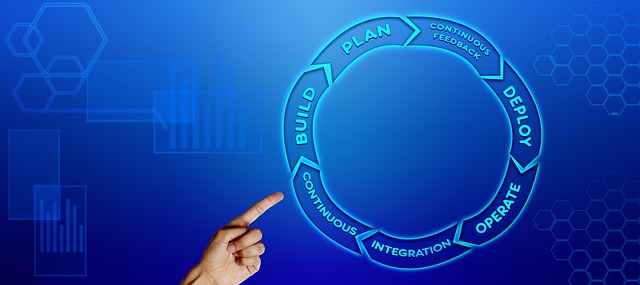
Unraveling the Potential of Blockchain Technology in IT: A Coding Perspective
In the ever-evolving landscape of informational technology, Blockchain has emerged as a revolutionary force, transforming our approach to data management and security. For developers, embracing blockchain technology is akin to unlocking a new dimension in coding, providing a canvas for innovative solutions that extend far beyond mere data storage.
At its core, Blockchain offers a decentralized and immutable ledger, which provides enhanced security and transparency. This principle resonates deeply within the IT community, leading to a paradigm shift in how we think about software development. Whether you are working on a simple application or a complex system, the primary benefit of using blockchain technology lies in its ability to maintain integrity and authenticity.
Imagine coding an application where each transaction is securely recorded and cannot be altered. This concept provides developers with peace of mind, knowing their data is not only secure but also tamper-proof. Through the integration of smart contracts, developers can automate processes in ways that were previously unimaginable, redefining operational efficiency.
From a coding perspective, the architectures of blockchain platforms like Ethereum, Hyperledger, and Binance Smart Chain present exciting challenges and opportunities. As a developer, understanding the nuances of consensus algorithms, such as Proof of Work and Proof of Stake, is critical. These algorithms essentially dictate how transactions are validated and added to the blockchain, which in turn affects performance and scalability.
Moreover, coding within the blockchain ecosystem often requires familiarity with languages such as Solidity for Ethereum or Go for Hyperledger Fabric. This creates a unique learning curve that can invigorate seasoned programmers while also providing a platform for innovation. For many, the challenge denotes not just a technical hurdle but a chance to delve into cryptographic principles that are essential in ensuring the security of distributed networks.
The application of blockchain technology extends far beyond cryptocurrencies. Industries from healthcare to finance leverage its robust capabilities to build trustworthy systems. For instance, in the supply chain sector, a developer can create solutions that provide real-time tracking and transparency of goods, ensuring every participant in the network has access to accurate and immutable data. As coding professionals, the potential to contribute to such transformative projects is both exhilarating and empowering.
As we embrace blockchain technology, we stand at the crossroads of innovation and responsibility. With great power comes a greater need for ethical considerations in coding practices. Developers must ensure that their creations not only harness the benefits of blockchain but also align with principles of inclusivity and accessibility, enabling broader adoption for the end users.
In conclusion, by integrating blockchain into our coding practices, we are not just adopting a new technology; we are participating in a movement that prioritizes security, transparency, and decentralization. With each line of code written, we hold the potential to redefine systems and elevate the very fabric of our digital lives.



